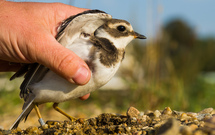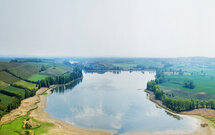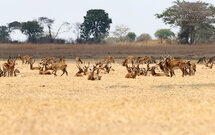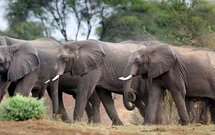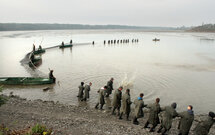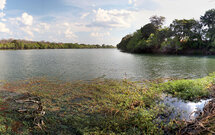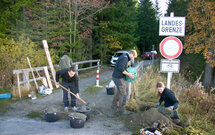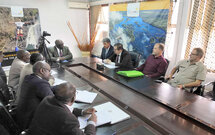Nature Conservation 5/2009 — 21. 10. 2009 — On Nature in the Czech Republic — Print article in pdf
The Orlické hory/Eagle Mts. Protected Landscape Area
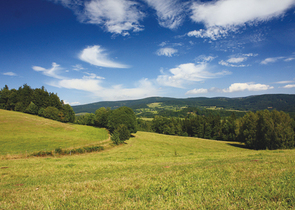
The Orlické hory/Eagle Mts. Protected Landscape Area (PLA) was declared on the territory of 204 km2on December 28, 1969. Its administration is based at Rychnov nad Kněžnou.
The PLA harbours the remarkably well-preserved landscape in East Bohemia, which includes the Orlické hory/Eagle Mts. ridge together with adjacent steep slopes and picturesque foothills. On the Orlické hory/Eagle Mts. ridge, there are springs of some mountain rivulets and their deep, hardly accessible valleys come down from there into farmland in the foothills. The harmonic landscape with a mosaic of preserved ecosystems and with sites influenced by humans for a long time is the main subject of nature conservation and landscape protection. The nature’s most valuable parts of the PLA are protected in 21 small-size Specially Protected Areas as well as at sites of the European Community’s Natura 2000 network. The latter includes the Orlické Záhoří Bird Area (in Act No. 114/1992 Gazette on the Protection of Nature and the Landscape, as amended later, the term for Special Protection Areas, SPAs under the Birds Directive) aiming at the Corncrake (Crex crex) conservation as well as four Sites of European Importance (in the above act the term for Sites of Community Importance, SCIs under the Habitats Directive), conserving sub-mountain and mountain Mat-grass (Nardus stricta) grasslands, beech and acidiphilous Norway spruce forests and the naturally meandering Divoká Orlice River. In the Orlické hory/Eagle Mts., forming a connecting line between western and eastern Sudeten Mts., important biogeographical Alpine-Carpathian elements, e.g. the Austrian Leopard’s Bane (Doronicum austriacum) or Alpine Purple Lovage (Ligusticum mutellina) occur. Two plant endemics, namely the Monk’s Hood (Aconitum plicatum) and Bohemian Gentian (Gentianella preacoxsubsp. bohemica)can also be found there. From a point of view of nature conservation significant animal species are the Tengmalm’s Owl (Aegolius funereus), Black Stork (Ciconia nigra) and Common Crane (Grus grus). Mountain streams are inhabited by the specific fauna, where, in addition to introduced trouts, the Bullhead (Cottus gobio) lives, while both the Brook Minnow (Phoxinus phoxinus) and Brook Lamprey (Lampetra planeri) prefer slower flows. Management measures, taken or contracted by the PLA Administration aim at small-size Specially Protected Areas and sites with occurrence of specially protected species, and include i.a. grassland management and at improving species composition of forest growths. In co-operation with water stream managers, the PLA Administration tries to improve canalized streams by measures changing them into semi-natural ones or by removing barriers to fish migration. Currently, the PLA Administration has been dealing with land-use/physical plans and land consolidation/re-plotting to solve further spatial development of human settlements.
Název připojené galerie
Quisque egestas velit non nulla fermentum, aliquet pharetra nunc malesuada. Nullam molestie vel diam non tincidunt. Sed pulvinar lacinia nunc et consectetur. Duis varius leo ac ex scelerisque, ullamcorper eleifend massa consectetur. Nullam in metus ac arcu pellentesque venenatis ac id lorem. Nulla nec ipsum sed enim sodales blandit a sit amet ex.



